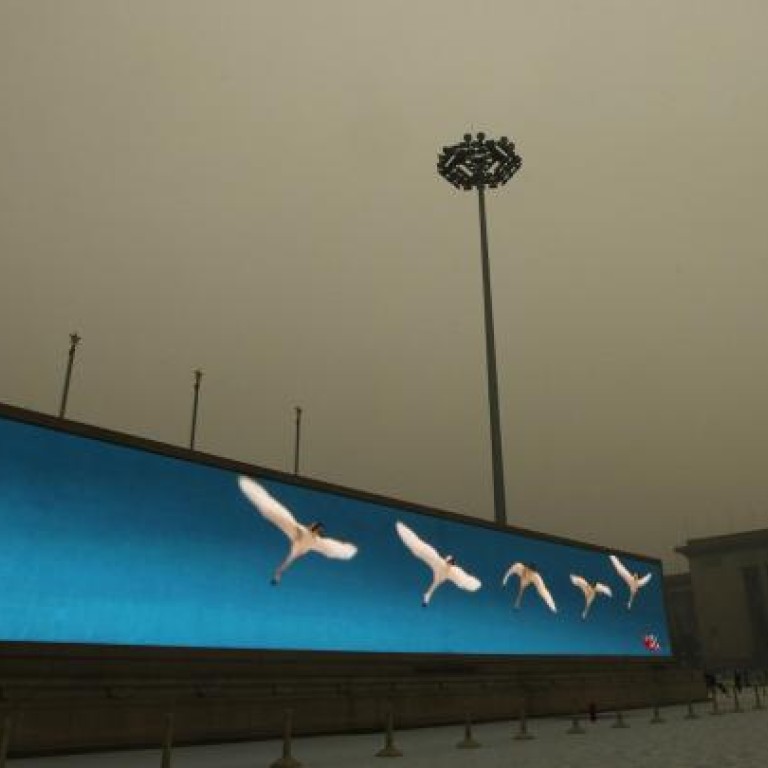
Japan looks west and holds its breath as Chinese pollution heads its way
Pollution that has been choking the mainlandis heading our way, scientist in Tokyo warns
The choking pollution that has shrouded large parts of the mainland is moving east to Japan, threatening to push levels of health-threatening PM2.5 particles there beyond World Health Organisation health standards.

Dr Toshimasa Ohara, head of the National Institute of Environmental Studies' Centre for Regional Environmental Research, conceded this figure was very low by Chinese standards, as cities such as Beijing often measure PM2.5 levels in the hundreds. But 40 was twice the level generally seen in Japanese cities this time of year and higher than the 25 micrograms level set by the WHO.
Ohara said this had raised concerns among Japanese, and complaints had been growing louder in recent years as China's air pollution worsened. Some fear the problem shows little sign of abating as China's economy continues to grow rapidly on the back of heavy industry and development.
Much of eastern China remained smoggy yesterday, with poor visibility stranding tens of thousands of air travellers. More than 100 flights in and out of Beijing Capital International Airport were delayed or cancelled.
The conditions may improve today with the arrival of an Arctic cold front, but while those winds would come as a blessing to China, they could be a curse to neighbours such as South Korea and Japan, Ohara said. Pollution from Chinese coal-fired power plants, factories and cars would be blown far into the Pacific Ocean.
"To Japan, winter is not the worst season [for air pollution]," he said. "In the spring, the high pressure systems on the continent can pump a lot more pollutants out of China."
But some mainland researchers disagree with their Japanese counterparts about the pollution threat to Japan.
Dr Wang Yuesi , a researcher with the Chinese Academy of Sciences' Institute of Atmospheric Physics, said the impact of Chinese pollutants on Japan would be too small to matter. "Japan is a long, narrow strip of islands. The entire country would not catch many pollutants with such a landscape. Most of the pollutants end up in the ocean. It shouldn't concern the people in Japan," he said.
Ohara said the impact varied across different regions, being higher in the western part of Japan and lower in the east. "We have definitive proof. The challenge is getting a precise estimate on the severity of the issue."
Scientists studying trans-boundary pollution in Asia are also struggling due to insufficient pollution data from China, according to Ohara.
Without the direct data, non-Chinese researchers can use only indirect ways to estimate China's pollution, such as monitoring monthly energy consumption, the increase in the number of cars being bought and used, and the capacity of power plants.
Beijing and Tokyo should work out a united mechanism to protect the environment in the Asia-Pacific region, Ohara said.
Japan could also take steps to address the problem at its source.
"Japanese politicians should push for the migration of clean production technology from Japan to China," Ohara said.

